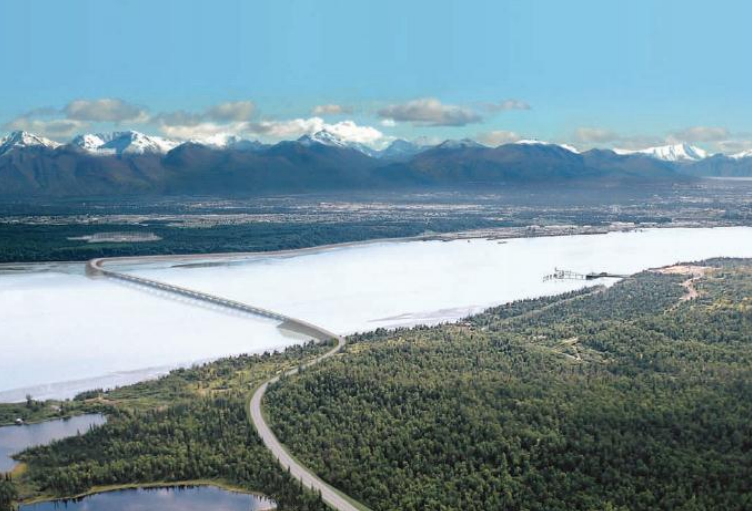
When the state took over the Knik Arm Crossing project last year, transportation planners took a fresh look at traffic projections with an eye on the tolls intended to pay for the project. But critics of the new plan say it’s the same old numbers game.
A socioeconomic study released by the state Department of Transportation shows a scaled down approach to fiscal plans to pay for the proposed bridge linking Anchorage and the Mat-Su Borough. DOT has applied for a federal loan to foot the bill for the bulk of construction costs of the bridge project, according to project director Judy Dougherty. She said the new look incorporates recent information.
“Since DOT and the state is bringing financing to this project, they are taking a much more conservative look at the population projection,” she said.
Dougherty said that the new financing outlook would depend on a minimum of 18,000 vehicles a day paying a toll to cross the bridge. The traffic projections are based on expectations of population growth in the borough.
Dougherty said under the current plan, toll revenues from the bridge are to be tapped to pay for the state’s share of the construction costs of the project. Dougherty points out that the old plan relied on tolls to pay for all bridge construction costs.
“Under the new plan, which is a public finance plan, the tolls will only be responsible for paying for operations and maintenance and for the TIFIA loan –” that’s a Transportation, Infrastructure, Finance and Innovation Act loan — “which is approximately one-third of the construction costs,” Dougherty said.
The TIFIA loan is federal transportation money. The bridge project has applied for and been denied TIFIA funds half a dozen times.
The traffic projections for potential users of the proposed Knik Arm bridge are not realistic, according to an opponent of the project, independent financial analyst Jaime Kenworthy. He said consultants for the bridge project have inflated traffic estimates.
“DOT has now spent a million dollars on new consultants to come up with the same numbers criticized by the LB and A audit,” Kenworthy said, referring to the Legislative Budget and Audit Committee. “Their population projections for Mat-Su in 2040 project 60 percent more growth than the state demographer, and that AMATS, the Anchorage transportation unit, is using for their 2040 plan.”
Kenworthy, a longtime critic of the bridge, brought his analysis to a meeting of the Knik Arm Bridge and Toll Authority board in Anchorage on Thursday. DOT consultants’ information shows a doubling of population by 2040 in most Mat-Su communities based on 2012 population figures.
“And KABATA/DOT has put five times more people and twice as many jobs at Point MacKenzie in 2040 than the borough’s own consultant projected for 2035.”
Dougherty said DOT’s population projections are centered on growth at Point MacKenzie. She said TIFIA experts will decide on the validity of the toll estimates.
“Our studies will have to be investment grade. We will have to have two rating opinions and they will evaluate our project and our projections,” she said.
Kenworthy counters that a fiscally strapped state needs to proceed with caution.
DOT consultants Cardno, Agnew-Beck and CDM Smith have worked on different aspects of the most recent Knik Arm Crossing study. All three consulting firms have worked on previous studies related to the plan. The KABATA board did not have a quorum at the meeting, and took no action Thursday.
